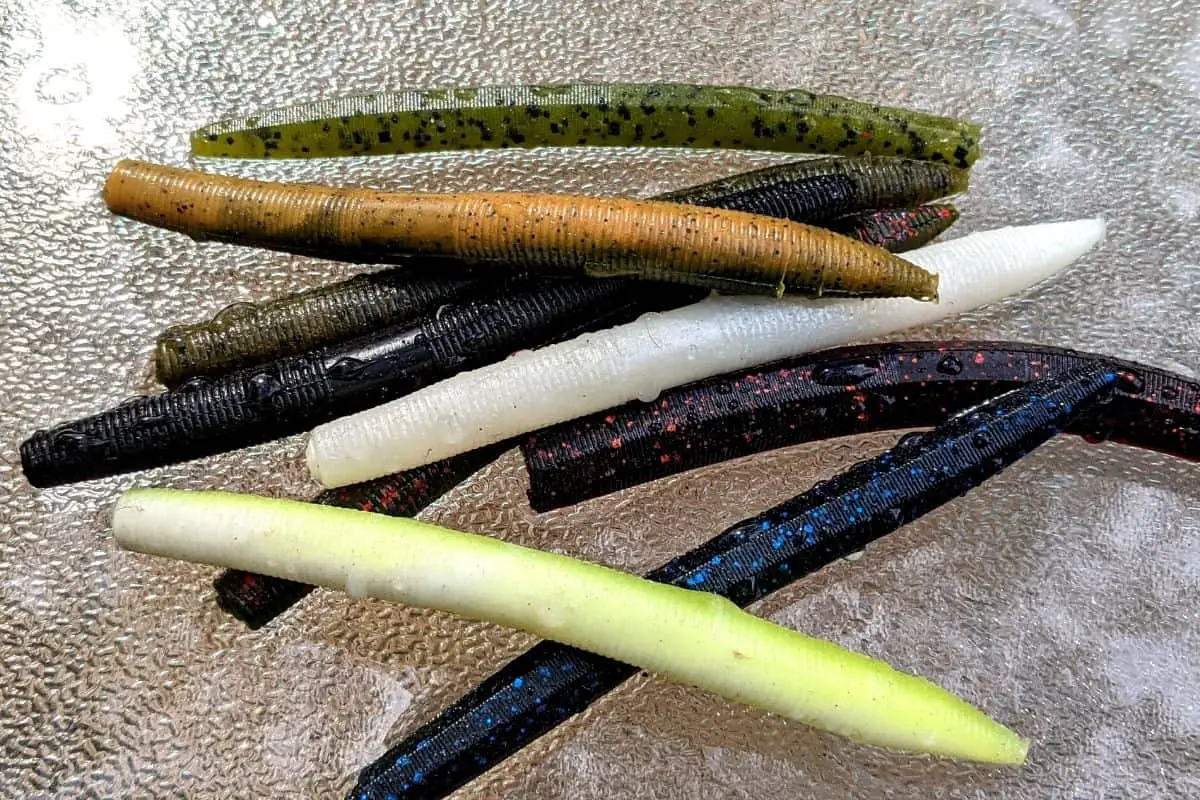Gary Yamamoto changed the bass fishing world when he first developed the Senko. Other manufacturers soon followed suit and called their variations stickbaits. It is probably safe to say it is the most popular lure to catch bass.
Bass anglers using stickbaits should always have white, green pumpkin, black, and junebug. Other lure colors can be added to an angler’s selection to meet various conditions they may run across.
New bass anglers as well as savvy veterans can experience consistent success with Senkos. Understanding the conditions at any given time can help bass enthusiasts narrow down their color choice.
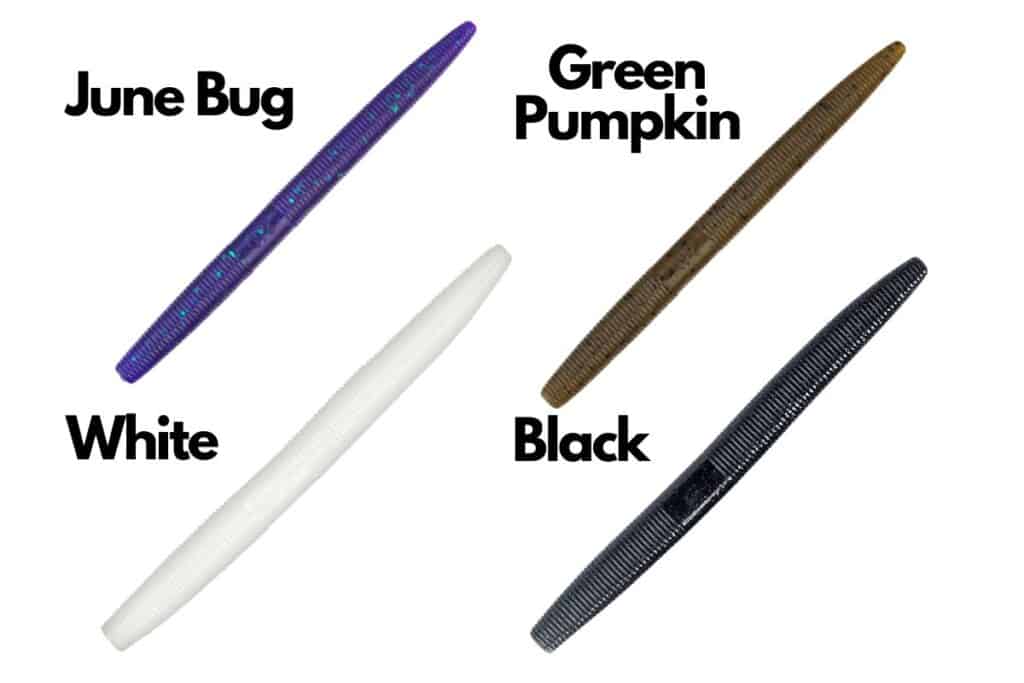
Water Clarity and Lure Color Choice for Senkos
We can break water clarity down by inches of visibility. Anything with more than 3ft of visibility can be considered clear. In some waters, like my home lake, you can see down more than 20ft most of the year.
Stained water can be anywhere from about a foot of visibility to that 3ft mark.
I consider dirty water anything where there is zero visibility to a few inches.
So how does this impact lure choice?
It is a common belief that a solid color, like black, is the best for dirty water and then anglers should use more natural colors that match prey species in clearer water.
(Here is an article on the best sizes for Senkos based on time of year and conditions.)
I wanted to put this dirty water color choice to the test.
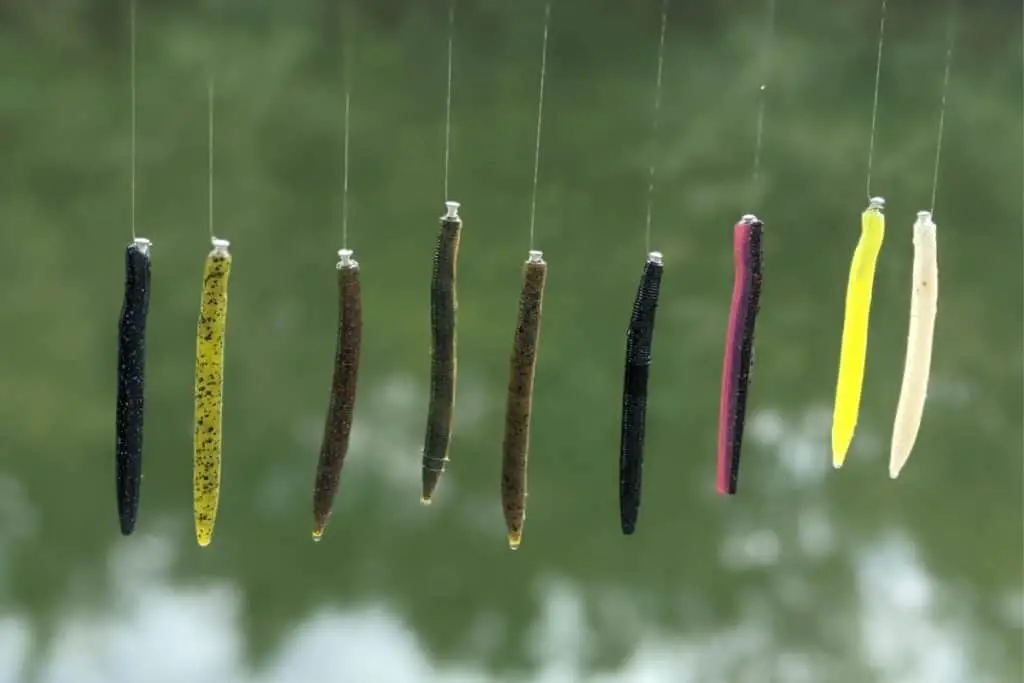
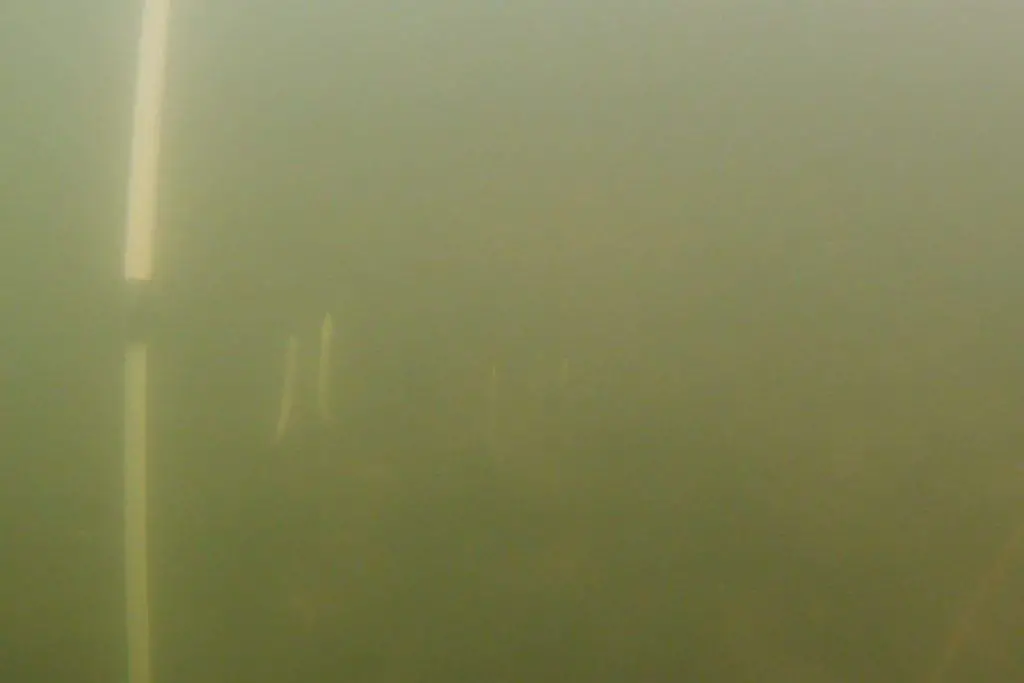
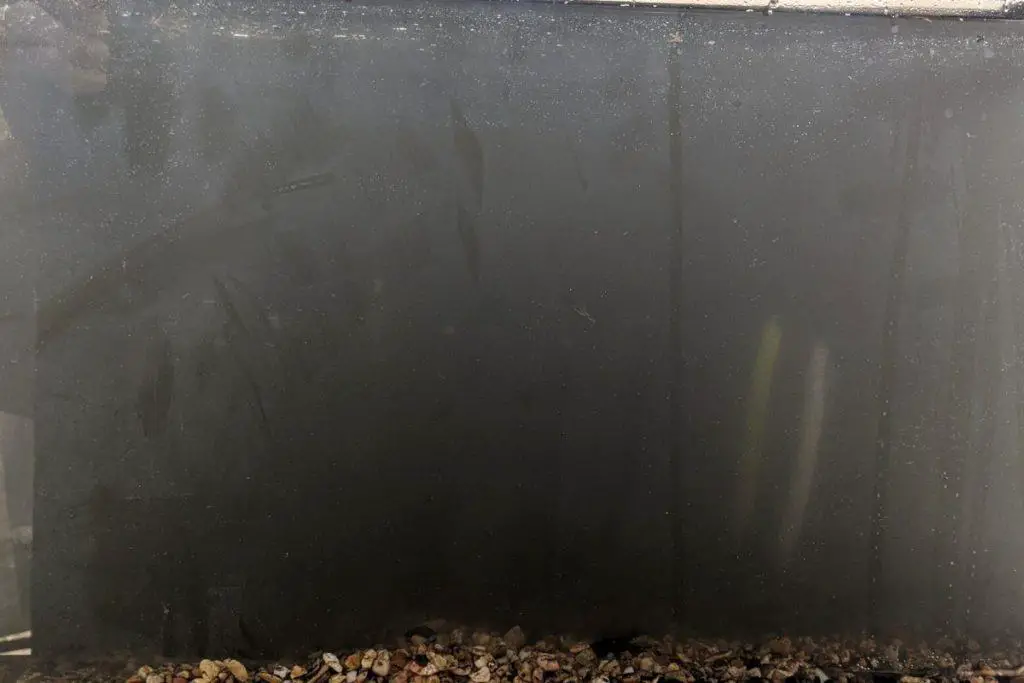
(Here is the complete article on lure color choice for dirty water.)
My experiment shocked me. Whether the water was slightly stained or extremely dirty, white was the most visible followed by white and chartreuse. In fact, black was about the least visible color.
I know that our eyes, and looking at colors through a camera lens, are different from looking through the eyes of a bass.
But, consistently, when fishing I catch more bass on white than black. Black Senkos still work, but the number of bites I get on white is more consistent.
You can take this info how you want, but if you are a bass angler that fishes dirty water a lot, I would definitely have both black and white Senkos available and keep alternating until the fish make it clear what they want on that given day.
Clear Water and Color Choice for Senkos (Stickbaits)
The debate on color choice for clear water can go on forever.
Here is how I look at it.
Prey species have very distinct and diverse color patterns. Whether the bass see these prey species in the same color spectrum as us or not, the bass must see them in some version. That could be various shades of grey.
If the orange on a bluegill appears a certain shade of grey to bass, then I want to match that orange the best I can so it appears to be the right combination of grey the bass are used to seeing in their food sources.
With that said, it is hard to beat the all-around fish-catching power of green pumpkin.
It has proven its ability in all sorts of water clarities and situations. The lure is a shade of green that matches lots of panfish as well as crawdads during certain color stages throughout the year.
Junebug is a Powerful Color for Senkos
This is a color choice that anglers just need to have with them, especially if they fish waters in Florida.
I don’t know if it is the tannic colored water that reacts to junebug lures or what, but Florida bass absolutely love soft plastics in junebug.
With that said, the color junebug is an absolute bass catcher all over the country.
Studies by biologists have shown that bass can pick out solid colors and contrasting colors quite well. While junebug may not offer the high contrast of other colors, it is a nice solid value that bass can clearly pick out and find enticing.
Bright sunshine and Color Selection for Senkos
I have spent numerous hours filming underwater. One of the most noticeable observations I have run across is the power of the sun and backlighting lures.
When the light is strong and the bass are looking up in the water column, the result is that almost every lure from underneath looks black.
This makes sense. Whenever we have a strong backlit situation, the result is a black silhouette.
When I am fishing lures on sunny days and the fish are likely to look up at them, think a hollow-body frog across emergent vegetation, I use solid black. The black lure offers a stronger outline and pattern for the bass to zero in on.
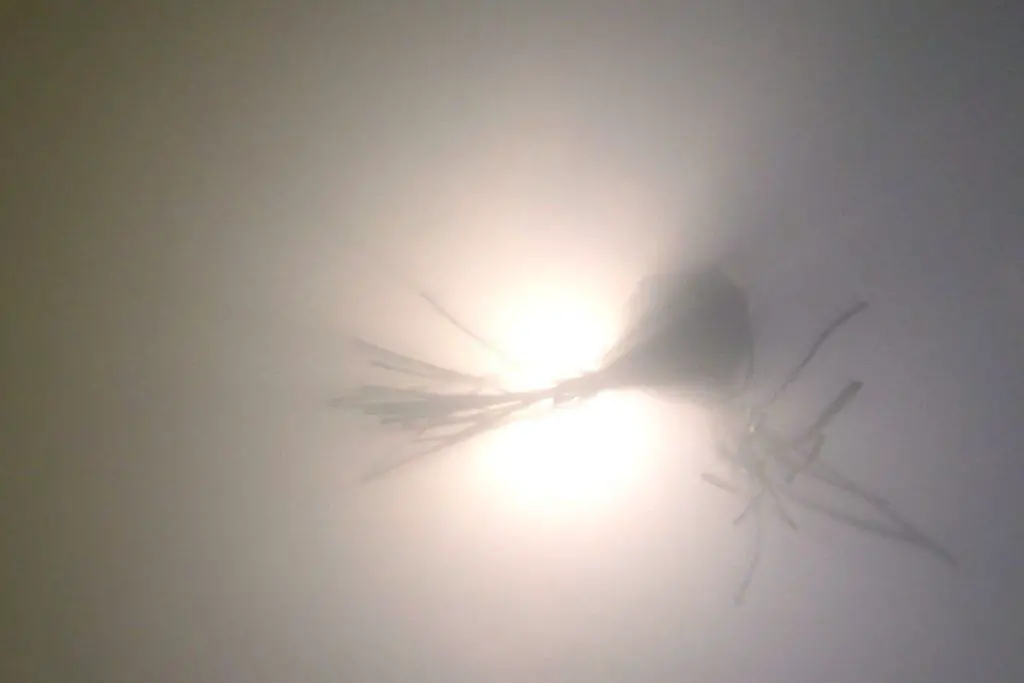
Lures of other colors will still appear black when backlit, but the profile is not quite as defined as a black lure.
It is important to keep in mind, this is when anglers feel the bass are going to face the sun when attacking the lure. If you believe the bass will be seeing the lure from the side or bottom-feeding, then there are other colors that are a better choice.
How Baitfish Impact Senko Color Selection
Bass are opportunistic feeders and will eat about anything, but shad and minnows play a huge role in that diet.
Not all waters have shad, but many do.
A white Senko is a terrific choice when these baitfish are on the menu. Not only are fish bellies white, but as mentioned earlier, white is visible from a distance.
Shad and minnows may have a silver or gray color pattern but a white Senko is close enough in looks to get the job done. If the water is very clear, I also like silver, gray, and translucent offerings. At this point, the color choice is more about angler confidence than anything else.
Other Factors to Consider When Fishing Senkos
While color choice is important, if the presentation is not what the bass want then the end result is few or no bites.
Each of these factors should be considered.
Are The Bass Hitting the Lure on the Fall or On the Bottom?
A weightless wacky rig has an incredible wiggle as it drops through the water column, but it doesn’t always mean that is when the bass eat it.
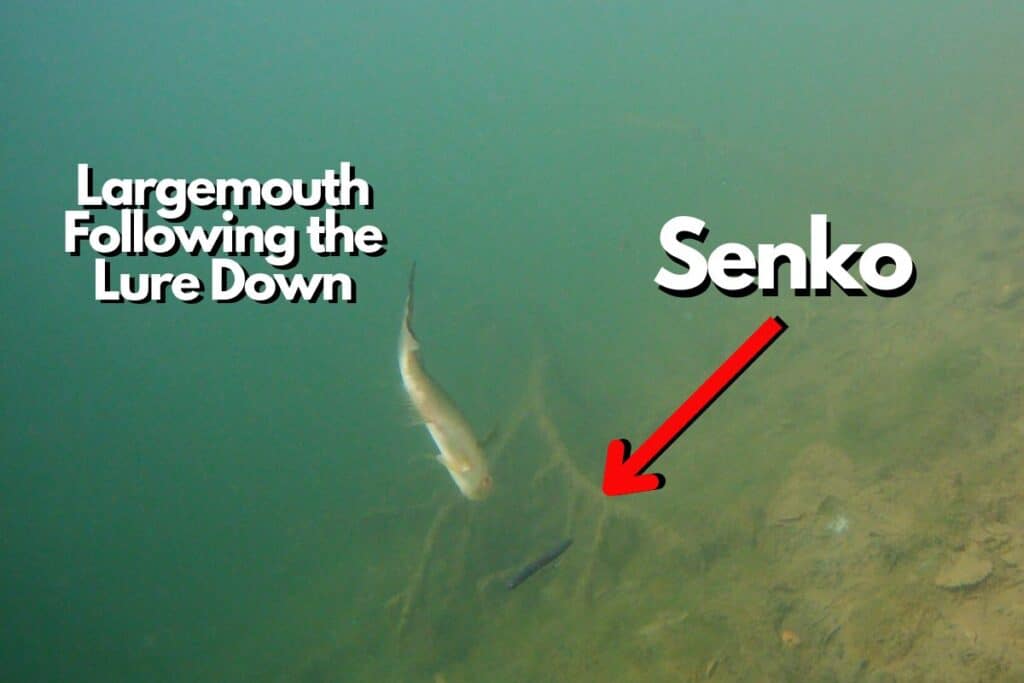
I have witnessed many times underwater the bass follow the lure as it sinks, but do not attack it. They then inhale the Senko once it has settled on the bottom. This is important for an angler to understand as the depth of the water changes.
We may need to use a weighted wacky, instead of weightless, when fishing deeper water and the bass prefer to feed down.
What is the Size of the Baitfish?
No one is going to argue that the standard 5” Senko isn’t going to work most of the time.
Yet accomplished stickbait anglers carry both 6” and 4” versions as well.
When would I throw a 6” Senko? One example is during the postspawn.
Female bass need to recuperate after the stressful spawning process. Bigger meals offer more calories. It is worth their effort to hunt the prey down. The animal world relies on instincts to survive. Bass that chase down prey which results in more calories lost than gained will not survive very long.
A 6” Senko has considerably more bulk and offers a larger profile. This can also be helpful when fishing in and around lots of cover where a smaller Senko might vanish into something like thick vegetation. The added size can help keep it visible.
While there are many other variables, these are two of the most important to keep in consideration.
Good luck out there and be sure to go out and encourage someone today. You never know how you may change their life forever.
Isaiah 6:8

